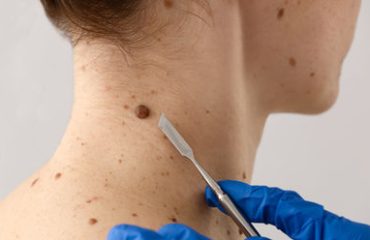Moles, medically known as nevi, are common skin growths composed of clusters of melanocytes, the pigment-producing cells of the skin. While most moles are harmless, some may warrant treatment due to cosmetic concerns or suspicion of malignancy. Dermatologists specialize in the diagnosis and treatment of various skin conditions, including moles, offering a range of options tailored to individual needs.
1. Surgical Excision: One of the primary treatment methods for moles is surgical excision. During this procedure, the dermatologist numbs the area with local anesthesia and surgically removes the mole, along with a small margin of surrounding skin if necessary. The excised tissue is then sent for pathological examination to determine if there are any abnormal cells present.
2. Laser Therapy: Laser therapy is another effective treatment option for certain types of moles, especially those that are flat or slightly raised. This non-invasive procedure uses focused laser energy to target and break down the pigment within the mole. Over time, the body’s natural healing processes absorb the fragmented pigment, leading to the gradual fading or elimination of the mole. Laser therapy is often preferred for its precision and ability to minimize scarring.
3. Cryotherapy: Cryotherapy, or freezing, is commonly used to treat smaller, non-cancerous moles. In this procedure, liquid nitrogen or another freezing agent is applied directly to the mole, causing the tissue to freeze and eventually slough off. Cryotherapy is relatively quick and typically requires minimal recovery time, though multiple treatments may be necessary for optimal results.
4. Shave Excision: For superficial moles that protrude above the skin’s surface, shave excision may be recommended. During this procedure, the dermatologist uses a small blade to shave off the mole flush with the skin. While shave excision is less invasive than surgical excision, it may not be suitable for deeper moles or those suspected of malignancy.
5. Monitoring and Surveillance: In cases where a mole is not deemed immediately concerning, but its appearance or characteristics raise suspicion, the dermatologist may opt for monitoring and surveillance. This involves regular check-ups to assess any changes in the mole’s size, shape, color, or texture over time. If significant changes occur, further intervention or biopsy may be recommended.
6. Consultation and Personalized Care: Ultimately, the choice of treatment for moles depends on various factors, including the mole’s size, location, appearance, and the patient’s preferences and medical history. Dermatologists provide personalized consultations to evaluate each individual case comprehensively and recommend the most appropriate treatment plan.
Conclusion: Dermatologists play a vital role in the diagnosis, management, and treatment of moles, offering a range of options tailored to each patient’s unique needs and circumstances. Whether for cosmetic reasons or concerns about skin cancer, seeking guidance from a qualified dermatologist ensures proper evaluation and access to the most effective treatment modalities available.



